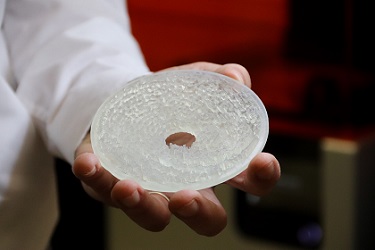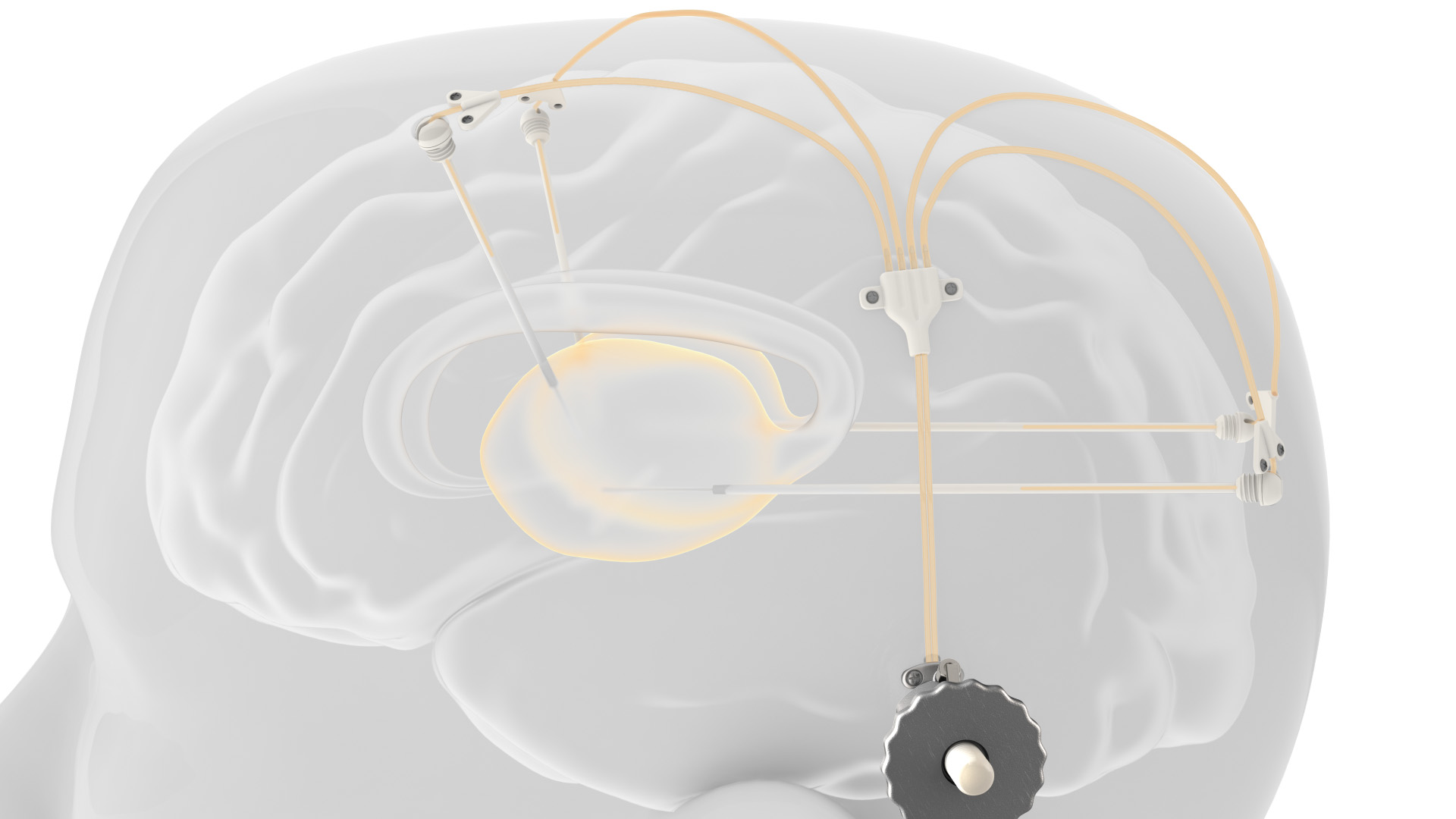A group of researchers from the Polytechnic University of Valencia (UPV), the Spanish National Research Council (CSIC), and Columbia University have discovered a potential new method to treat nervous system diseases using 3D printing.
The team is 3D printing acoustic holograms capable of opening the blood-brain barrier (BBB) – a semipermeable border of cells that prevent solutes in the blood from crossing into the central nervous system – and enabling non-invasive targeted drug delivery into the nervous system.
Having successfully performed a BBB opening using the acoustic holograms in mice, the researchers believe their technique could eventually provide a promising treatment for central nervous system diseases in humans.
“Thanks to our holograms, the ultrasonic beam focuses and adapts bilaterally and very precisely on parts of the brain that are of great therapeutic interest, such as, for example, the two nuclei composed of the hippocampus, related to Alzheimer’s disease, and which has a whimsical 3D shape,” said Noé Jiménez, a researcher at UPV.

Treating nervous system diseases with AM
In recent years, the bioprinting field has seen numerous innovative advances regarding the study and treatment of various neurological conditions.
Global engineering technology firm Renishaw has been particularly successful in this area, having concluded the first-in-human trial of its 3D printed neuroinfuse drug delivery device in 2020. The device is reportedly the only platform to facilitate repeated, intermittent infusions into the parenchyma of cerebral dopamine neurotrophic factor (CDNF) as a treatment for Parkinson’s disease.
Elsewhere, Aston University’s EU-funded Meso-Brain research project is developing 3D nanoprinting technologies to produce new modeling and testing tools for the treatment of Parkinson’s, dementia, and other nervous system diseases, while neuroscientists from the University of Sheffield, St Petersburg State University, and TU Dresden have fabricated a 3D printed prototype neural implant that holds promise as a treatment for nervous system injuries like paralysis.
Most recently, researchers from Politecnico di Milano and Humanitas University are using 3D printed neural tissues to investigate the causes and development of neural diseases like Pitt-Hopkins Syndrome (PTHS). Backed by €250,000, the team is creating an in vitro model of the human cerebral cortex with 3D bioprinted vascularized neural tissues that will allow them to collect vital biological data unobtainable from current models.

3D printing acoustic holograms
According to the UPV, CSIC, and Columbia University team, focused ultrasound holds great potential for the treatment of neurological diseases due to its non-invasive nature.
“However, applying them to the structures of the central nervous system is complicated, due to two obstacles: the effects of aberration and attenuation of the skull and the complex and extensive spatial distribution of the deep structures of the brain,” said Francisco Camarena, a researcher at the Institute of Instrumentation for Molecular Imaging, a joint center between UPV and CSIC.
To address these issues, the researchers sought to develop 3D printed acoustic holograms capable of zoning an area of a patient’s amygdala – a cluster of cells located near the base of the brain that helps to define and regulate emotions.
The acoustic holograms reportedly allow for a more controlled opening of the BBB than that achieved by exclusively making use of ultrasound. Most significantly, they can correct the aberrations introduced by the skull while also generating an ultrasonic multi-focal beam within particularly important brain structures.
In the event of an ultrasound of the amygdala being required, the acoustic holograms are designed to zone the treatment area from information provided by a CT and MRI scan. The hologram is placed in front of the ultrasound transducer, which vibrates at half a million oscillations per second to emit a wave that crosses the hologram.
Simultaneously, a cone full of water is placed in contact with the skull, through which the wave is propagated before reaching the patient’s brain. The wave then passes through the brain and is focused on the particular area of therapeutic interest, upon which microbubbles are inserted into the bloodstream.
When the bubbles reach the brain capillaries and coincide with the ultrasound, they begin to vibrate, causing the epithelial tissue of the BBB to give way. Through this opening, drug molecules can pass into the nervous system in order to treat the neural disease in question.

The team chose to 3D print the holograms due to the technology’s customization abilities and low-cost benefits, with the holograms costing between €40 to €300 depending on the required application.
“For example, let’s say the doctor needs to do an ultrasound of the patient’s amygdala. For that, they’d provide us with a CAT scan and an MRI of the patient’s head, on which they would identify and segment the treatment area,” said Sergio Jiménez, a doctor at UPV and Columbia University. “Based on this information, we design the hologram we need to get the ultrasound of the region of interest.”
According to the researchers, this marks the first time that the BBB has been opened simultaneously in the brain’s two hemispheres, or sides, and has been achieved with a resolution that is far superior to the standard. As a result, the 3D printed hologram enables the improved location of the treatment area, minimizing the healthy brain tissue volume that is targeted by ultrasound while reducing the cost and operating time.
The team is currently working to verify its technology for opening the BBB in “non-human primates” such as rats. The researchers are also turning their attention to designing the first protocols for experimentation in humans to treat brain tumors and perform brain neurostimulation studies.
Further information on the study can be found in the paper titled: “Acoustic holograms for bilateral blood-brain barrier opening in a mouse model,” published in the IEEE Transactions on Biomedical Engineering journal. The study is co-authored by S. Jiménez-Gambín, N. Jiménez, A. N. Pouliopoulos, J. M. Benlloch, E. E. Konofagou and F. Camarena.
Subscribe to the 3D Printing Industry newsletter for the latest news in additive manufacturing. You can also stay connected by following us on Twitter and liking us on Facebook.
Looking for a career in additive manufacturing? Visit 3D Printing Jobs for a selection of roles in the industry.
Subscribe to our YouTube channel for the latest 3D printing video shorts, reviews, and webinar replays.
Featured image shows the 3D printed acoustic hologram. Photo via UPV.



